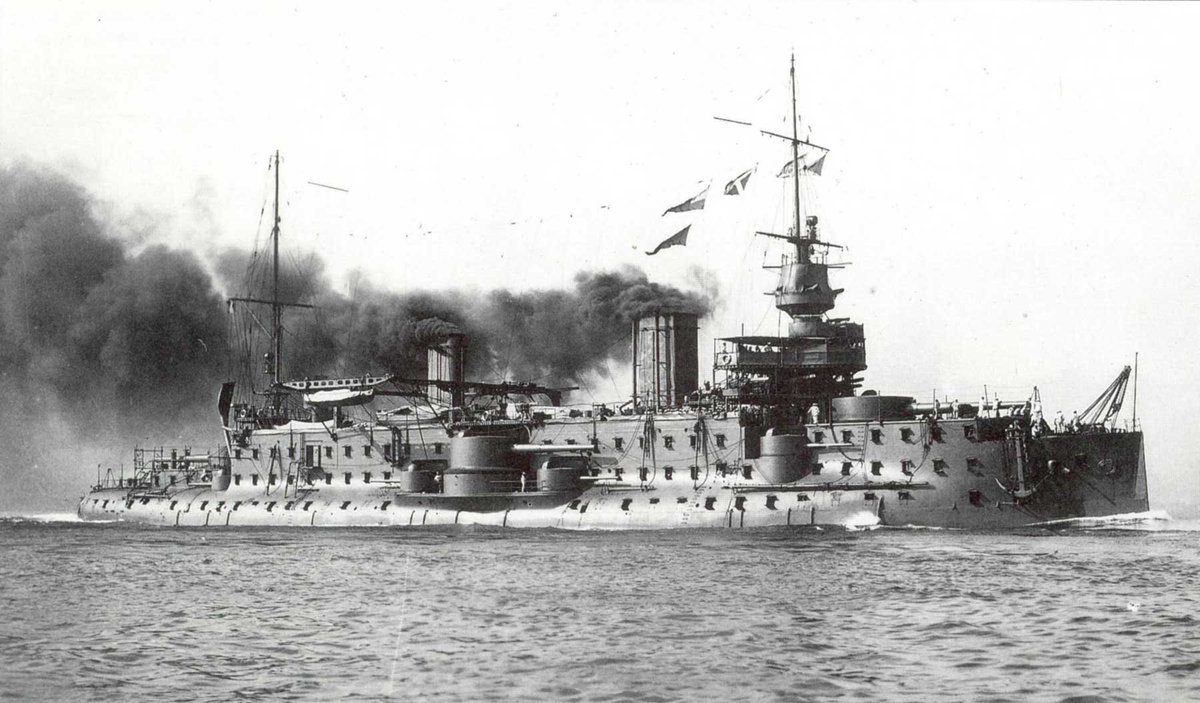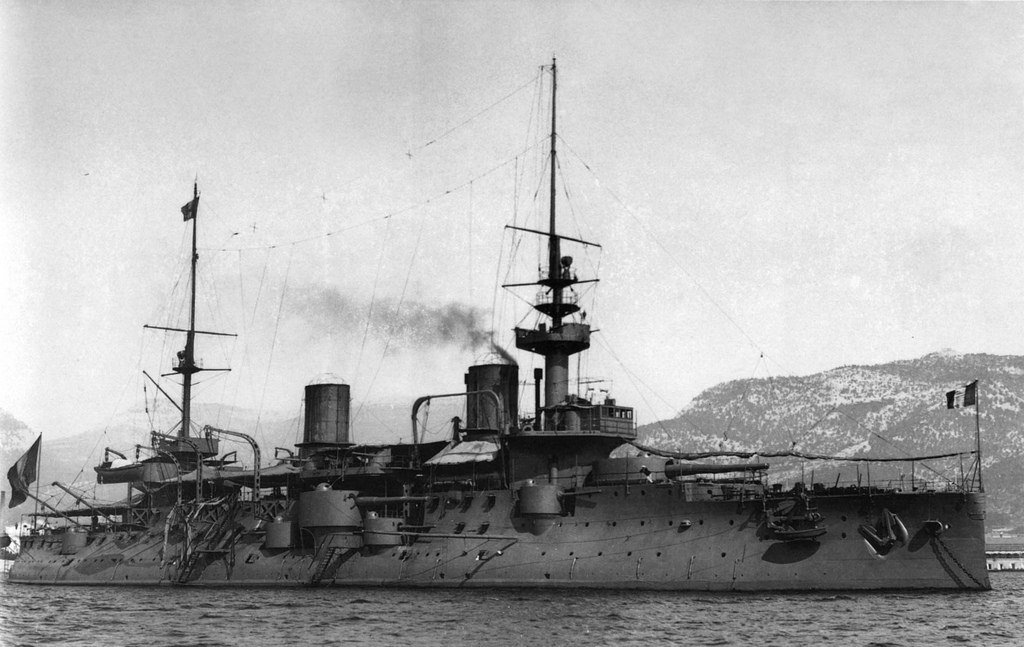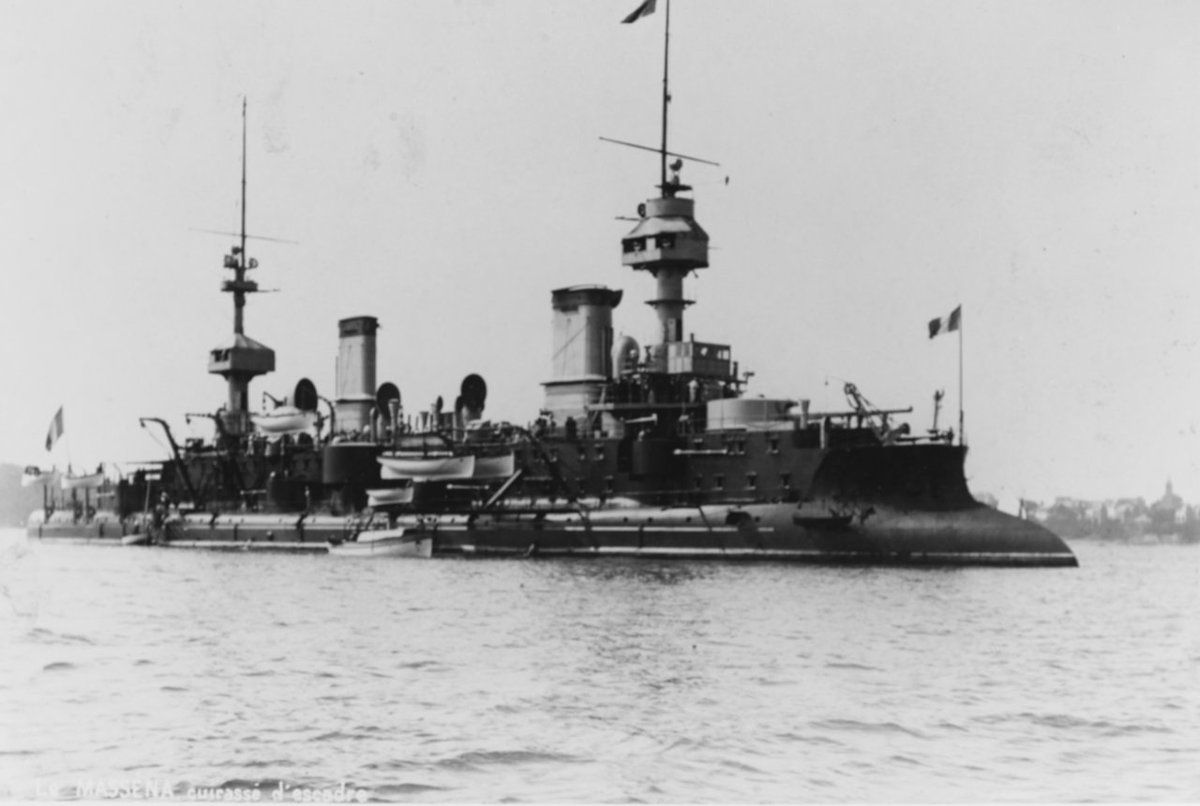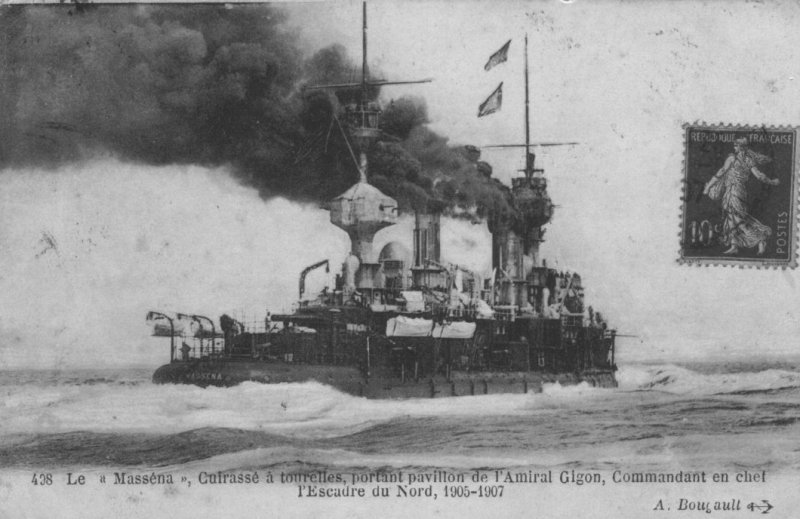If you think your day& #39;s going badly, just be grateful you& #39;re not the French admiral who woke up to find this thing fouling up his dockyard:
And as you& #39;d imagine, moving around to the pointy end* doesn& #39;t exactly improve matters:
*technical nautical term
*technical nautical term
This item (calling it a "ship" seems altogether too ambitious) was the Charles Martel, and it is my solemn duty to inform you that things were about to get worse. It turns out that the French were only just warming up.
I& #39;m told that French is the language of love, so fuck knows what they called this thing:
Actually, I do know what they called it: Carnot. And it& #39;s a ship I turn to whenever I need a jolly good laugh.
I can never work out what& #39;s more amusing. The fact it looks like it capsized halfway through construction and they carried on regardless, or the hundreds of portholes that would have done nothing for armour protection.
Presumably the architect had been inspired by France& #39;s glorious naval past.
He must have been gutted when he finally caught up with the highlights of the Battle of Trafalgar on Match of the Day, having successfully dodged the result for most of the 19th century.
He must have been gutted when he finally caught up with the highlights of the Battle of Trafalgar on Match of the Day, having successfully dodged the result for most of the 19th century.
Dazzle camouflage was invented to make it difficult to work out how fast a ship was moving and in what direction, but French architects had already independently hit on the same idea.
With Carnot it& #39;s impossible to tell whether it& #39;s actually a ship, how many of the sodding things have been badly welded together, which way it& #39;s supposed to be facing, and whether it hasn& #39;t already sunk.
It& #39;s also hard to accurately gauge the range of your target when you& #39;re shaking with laughter.
The most notable feature is of course the excessive tumblehome, named after the way the perpetrator returned from the pub on the night he sat down to design his masterpiece.
And Masséna, whose elegant bow does nothing to dispel the notion that the guys building the hull were holding the instructions upside down:
There& #39;s an old engineering saying that "if it looks right, it probably is right", and the corollary is probably true: these ships looked wrong.
Jauréguiberry& #39;s own boilers revolted and exploded, killing six. Her torpedo tubes exploded at least twice, as did her main armament. She also entertained the British by grounding herself in Portsmouth.
Charles Martel& #39;s aesthetics so offended the captain of the training submarine Gustave Zédé that he fired a torpedo to try and sink her.
Masséna was used in a bizarre gunnery trial in which she attacked a brand new battleship staffed only by sheep. The sheep were unharmed but managed to give Masséna a 15cm hole in her hull.
All five ships were quickly rendered obsolete by the launch of Dreadnought. Unfortunately for the British, so was virtually the whole British navy. Overnight the UK had reduced its frontline navy to just one ship. Oops.
Now seriously outgunned and outpowered, Carnot and Charles Martel were laid up before the start of the First World War. Masséna was deliberately scuttled at Gallipoli as a breakwater.
Bouvet hit a mine in the Dardenelles campaign, and sank with just 50 men saved. Due to her poor condition other allied ships assumed she& #39;d blown up via a single shell, torpedo, or even an accident. Two more ships entered the minefield and sank.
Jauréguiberry lasted longest, first replacing Bouvet and then protecting the Suez Canal. Her guns were taken off for the defence and she was then laid up as an accommodation hulk until 1932.
The reign of error was finally over.
And for the poor bastards in the fighting tops when this thing was under full power, it probably hadn& #39;t come soon enough...
And for the poor bastards in the fighting tops when this thing was under full power, it probably hadn& #39;t come soon enough...

 Read on Twitter
Read on Twitter








